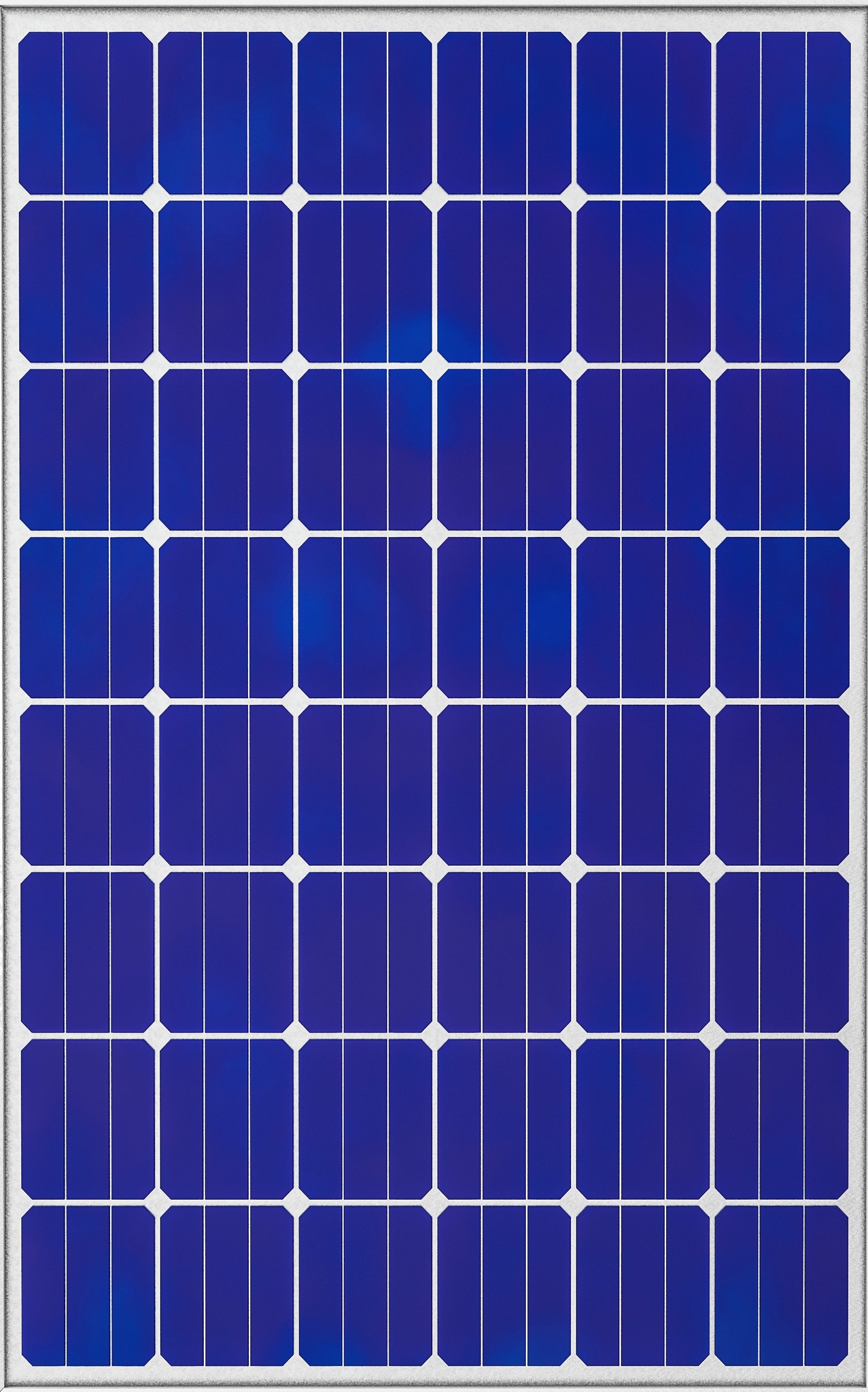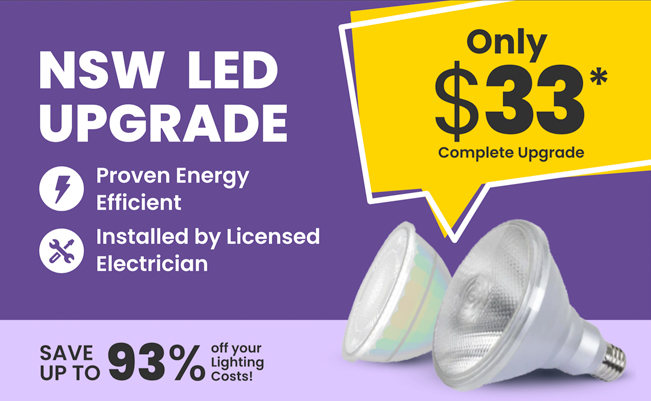The global community is increasingly adopting renewable energy sources like solar to curb hazardous gas emissions. Solar energy stands out among these greener choices because of its ready availability, reasonable cost, and friendly impact on nature.
In Australia, where the sun shines brightly most of the year, solar has grown notably in appeal. An important incentive pushing Australians to install solar panels on homes and offices is the country’s “feed-in tariff” program.
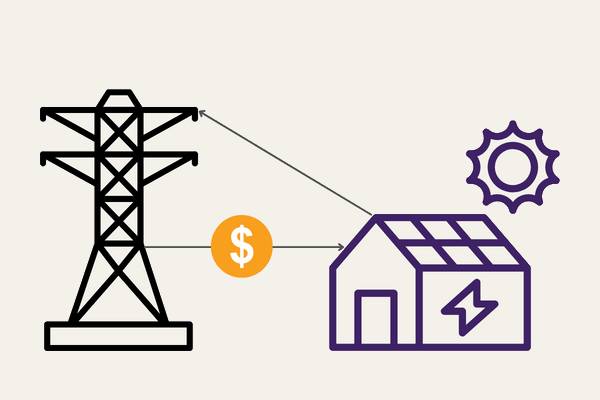
This program compensates households and companies for extra electricity sent back to the grid, making solar energy an affordable way to help neighbours while helping the planet.
This article will explain what feed-in tariffs are and how they function in Australia, as well as sharing some figures and facts to showcase their impact on increasing solar energy use.
What is a feed-in tariff?
A feed-in tariff acts as a bonus or incentive you get for any surplus power your renewable energy source generates and shares with the grid.
The value of the feed-in tariff depends on several elements, such as location, dimensions and model of the system, the hour of the day, and the electricity provider. Feed-in tariffs are typically listed in cents per kilowatt-hour (c/kWh).
Feed-in tariffs are grouped into two main classifications: Gross and net.
A gross feed-in tariff rewards you for the total amount of electricity that your system yields, irrespective of whether you use it or not.
A net feed-in tariff pays you only for the excess electricity that you export to the grid, after deducting your consumption.
The variation in feed-in tariffs can depend on the hour of the day or even the current season. Some tariffs remain constant, offering the same rates irrespective of the time, while others fluctuate with time, paying back different amounts during peak times, regular times, or dull periods.
These time-dependent tariffs are orchestrated to mirror the variable value of electricity in the large-scale trade arena, thereby encouraging solar users to shift their usage to instances when electric power costs less and is more prolific.
How do feed-in tariffs work in Australia?
Australia feed-in tariffs are managed by each state and back up a federal rule called Renewable Energy Target (RET). The RET means electricity sellers need to get some of their energy from clean sources. These can include places like solar, wind, hydro, or biomass.
The RET also instigates a marketplace for renewable energy certifications (RECs), bestowed to renewable energy creators for every megawatt-hour (MWh) of power they generate. These RECs can subsequently be bought or bartered to electricity providers, assisting them in fulfilling their RET commitments.
The Renewable Energy Target (RET) program also contributes by offering monetary support for setting up small-scale green energy systems, like solar PV, via the Small-scale Renewable Energy Scheme (SRES).
The SRES rewards small-scale technology certificates (STCs) to qualifying systems that can be traded in for a discount or refund on the initial expenditure of the setup.
The total number of STCs allocated is primarily dictated by the system’s capacity and situation, along with the anticipated quantity of electricity it will yield over its lifespan.
The feed-in tariffs extended by power providers supplement the perks of the RET and the SRES. Although, these feed-in tariffs are not compulsory nor consistent nationwide.
Every state possesses its distinct rules and conditions pertaining to the qualification, period, and pricing of the feed-in tariffs.
Impact of Solar Feed-in Tariffs on Solar Energy Adoption in Australia:
Solar panel adoption across Australia soared since solar feed-in tariffs were introduced. Two million households embraced rooftop solar systems by December 2023, says the Australian Photovoltaic Institute.
Queensland led the solar surge, introducing generous tariffs early. By March 2021, around 72% of Queenslanders basked under gleaming solar panels on top of their homes.
- Solar energy adoption skyrocketed nationwide after various states unveiled feed-in tariff incentives. The Australian Photovoltaic Institute reported over two million residences sporting rooftop solar installations by late 2023. Queensland, a frontrunner in generous solar feed-in tariff policies, witnessed a remarkable surge. Approximately 72% of Sunshine State households had embraced solar power by March 2021, making it the frontrunner in residential solar penetration across the nation.
- New South Wales (NSW): In NSW, a stepped solar feed-in tariff (FiT) scheme was implemented, giving more fruitful returns for smaller setups. This move triggered a steep surge in home solar panel installations, hitting close to the 1.2 million mark in June 2021.
- Victoria: Even with solar FiT costs being less enticing compared to other territories, the thirst for solar panels persisted in Victoria. The data reveals that more than 1.1 million Victorian homes boasted possessing solar system installations by June 2021.
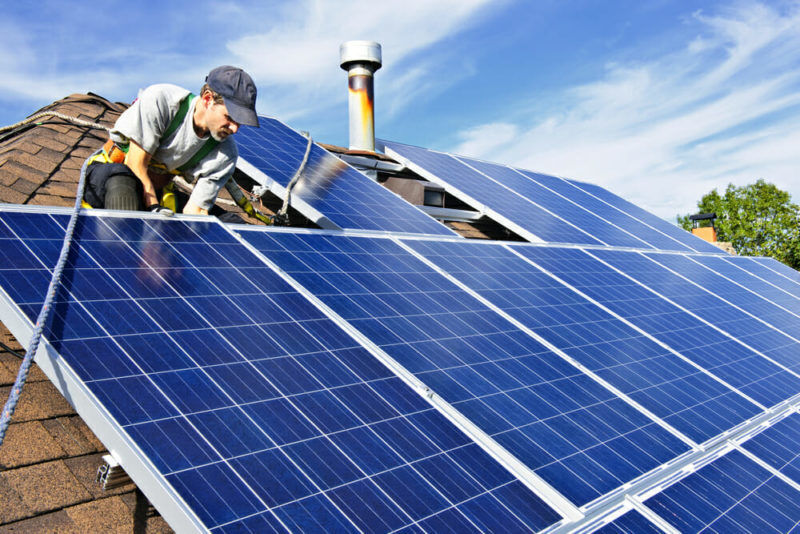
How Do I Calculate My Solar Feed-In Tariff Payments?
Profits from the solar feed-in tariff are a direct bonus for any excess energy transferred from your solar installation to the power network.
This remuneration hinges on the feed-in tariff rate, reflecting the expense of every kilowatt-hour (kWh) of energy you share. Factors like your geographical location, your chosen energy supplier, and the tariff scheme can influence the rate’s variance.
In order to estimate your solar feed-in tariff earnings, it is necessary to acquire the following details:
- The size and efficiency of your solar system, which establishes your electricity generation and export capacity
- Your pattern of electricity usage, which outlines your consumption levels and usage timing
- Your feed-in tariff rates and structure, dictating the compensation for the electricity you export
The basic formula to calculate your solar feed-in tariff payments is:
Solar feed-in tariff payments = Feed-in tariff rate x Exported electricity
For example, suppose you have a 5-kW solar system that generates 20 kWh of electricity per day, and you consume 15 kWh of electricity per day. If you are on a net feed-in tariff scheme that pays you 10 c/kWh, your solar feed-in tariff payments would be:
Solar feed-in tariff payments = 10 c/kWh x (20 kWh – 15 kWh) = 50 c/day
Suppose you’re enrolled in a gross feed-in tariff program paying 20 cents per kWh. Here’s what your solar feed-in tariff earnings would look like:
Solar feed-in tariff payments = 20 c/kWh x 20 kWh= 400 c/day.
However, it’s important to note that you’ll still be responsible for the 15 kWh of electricity you draw from the grid. The cost of this could potentially surpass the feed-in tariff rate.
Conclusion
Incentive programs like feed-in tariffs play a key role in encouraging solar energy adoption in Australia. They carry diverse benefits, encompassing economic, environmental, and societal areas for both solar power users and the overall electricity framework.
Yet, they are not free of shortcomings and problems that require resolution and correct handling. The value and feasibility of solar energy is not determined solely by feed-in tariffs, it also takes into account factors like the patterns of electricity consumption, the system scale and efficiency, and the specifics of the electricity plan and provider.
By thoughtfully considering these elements, individuals using solar energy can maximize its benefits and use it to build a more sustainable and eco-friendly future for Australia.
Solar energy is the radiation from the Sun that can be used for various purposes, such as heating, cooling, lighting, or generating electricity.
Solar energy is one example of clean energy that, in recent years, has been extensively promoted to reduce fossil fuel consumption and greenhouse gas emissions. Solar energy is abundant, inexhaustible, and available almost everywhere on Earth.
LET’S HELP YOU CHOOSE THE RIGHT SOLAR SYSTEM FOR YOUR HOME AND BUSINESS
Solar Solutions at Zero Cost: Government Rebated Installations! Invest in Sunshine with No Upfront Costs.
The uses of solar energy can be divided into two main categories: photovoltaic solar energy and thermal solar energy. Photovoltaic energy is used exclusively to generate electricity by converting sunlight directly into electric current.
Thermal solar energy is used to harness heat from the sun for different applications, such as heating water, air, or other fluids, or creating steam to power turbines.
This article will explore some examples of solar energy applications in different fields and sectors, such as residential, commercial, industrial, agricultural, and environmental.
Residential Solar Energy
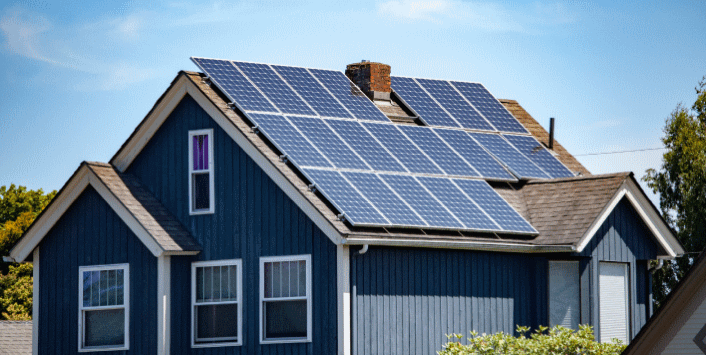
One of the most common and widespread uses of solar energy is to power homes and buildings. Residential solar energy can be either off-grid or grid-connected.
Off-grid solar energy systems are installed in isolated or remote areas, where there is no access to the public electricity grid. These systems usually consist of solar panels, batteries, charge controllers, and inverters, and can provide electricity for lighting, appliances, and other needs.
Grid-connected solar energy systems work in parallel with the public electricity grid, and can either supplement or completely replace the electricity supplied by the utility company.
These systems can also have the option to sell excess electricity back to the grid, reducing the electricity bill and securing an additional income for the owner.
Some examples of residential solar energy are:
- Solar panels on the roof or in the backyard of a house, provide electricity for the household.
- Solar water heaters use solar collectors to heat water for domestic use, such as showers, laundry, or dishwashing.
- Solar air heaters that use solar collectors to heat air for space heating or ventilation.
- Solar cookers which employ solar concentrators to cook food or boil water, without the need for firewood, gas, or electricity.
- Solar lights use solar cells to charge batteries that power LED lamps, lanterns, or flashlights.
Commercial Solar Energy
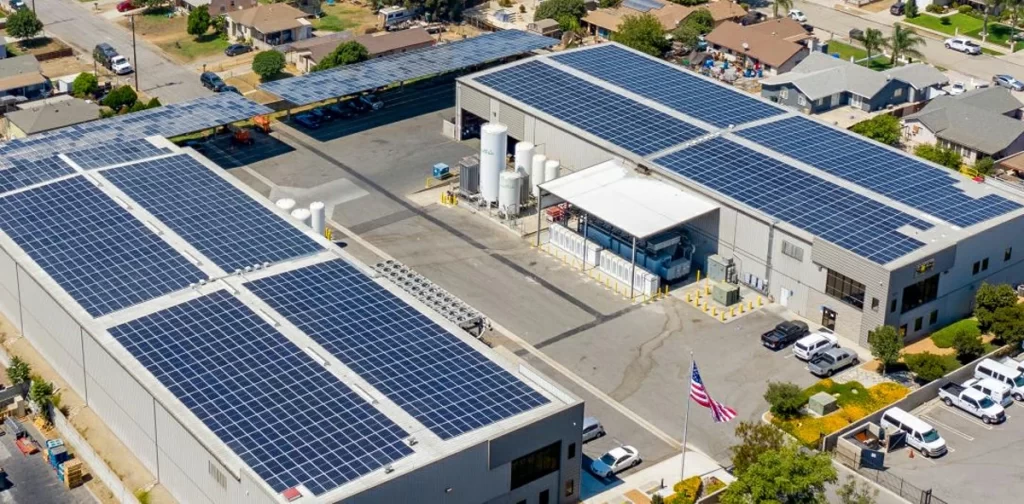
Another common and growing use of solar energy is to provide electrical power to businesses and commercial facilities, such as offices, shops, hotels, restaurants, schools, hospitals, and more.
Commercial solar energy can also be either off-grid or grid-connected, depending on the location and the demand of the facility.
Commercial solar energy can provide electricity, heating, cooling, or lighting for various purposes, such as operating equipment, appliances, computers, or security systems, or enhancing the comfort and convenience of the customers and employees.
Some examples of commercial solar energy are:
- Solar rooftops: Many commercial buildings have large rooftops that can be used to install PV panels or solar collectors. Solar rooftops can generate electricity or heat for the building, and can feed excess power back to the grid. For example, the Apple Park headquarters in Cupertino, California, has a 17-megawatt (MW) PV system on its roof, which provides 75% of the building’s electricity needs
- Solar farms, large-scale installations of solar panels or solar thermal collectors, that generate electricity for the grid or for specific customers, such as industries or utilities.
- Solar rooftops, medium-scale installations of solar panels on the roofs of commercial buildings that generate electricity for the building or to be sold back on the grid.
- Solar carports: Solar carports are structures that provide shade and protection for parked cars, while at the same time generating electricity from PV panels. Solar carports can be installed in parking lots or garages of commercial buildings, and can power the building or charge electric vehicles. For example, the MGM Resorts International in Las Vegas, Nevada, has a 25-MW solar carport system, which covers 33 acres of parking space and provides 25% of the electricity needs of 13 resorts and casinos.
- Solar water heating systems, using solar collectors to heat water for commercial use, such as washing, cleaning, or sanitizing.
- Solar air conditioning systems, using solar thermal energy to power absorption chillers or desiccant coolers, that provide cooling for buildings or refrigeration for food storage.
- Solar lighting systems, using solar cells to charge batteries that power LED lamps, signs, or streetlights.
Industrial Solar Energy
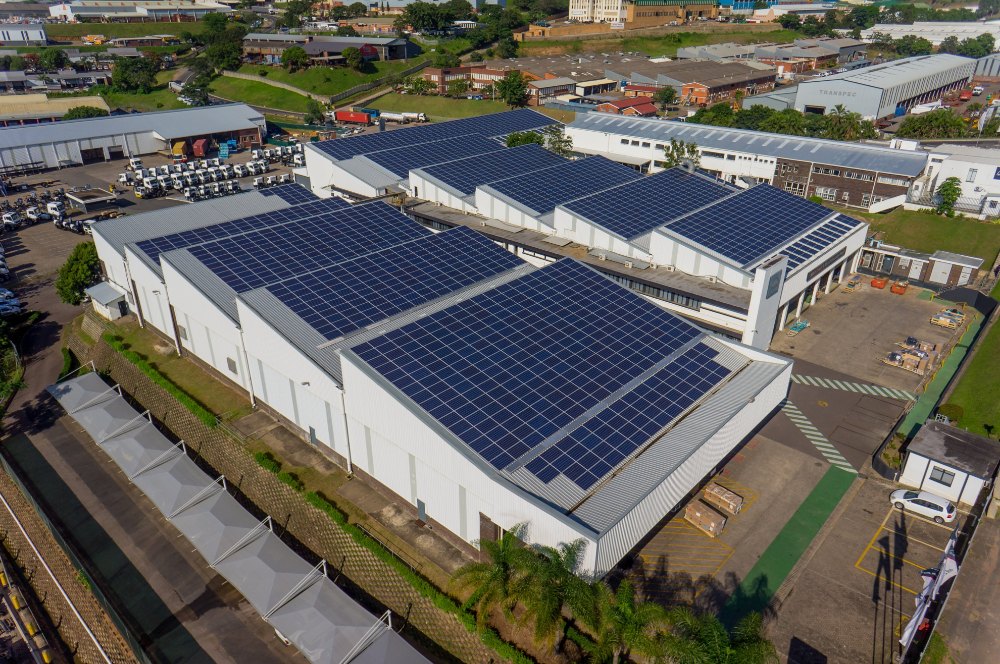
Industrial solar energy is the use of solar energy to power industrial processes, such as manufacturing, mining, or chemical production.
Industrial solar energy can help reduce the dependence on fossil fuels, lower the operational costs, and improve the environmental performance of the industries. Industrial solar energy can be either photovoltaic or thermal, depending on the type and the temperature of the process.
Some examples of industrial solar energy are:
- Solar photovoltaic power plants that use solar panels to generate electricity for industrial use, such as powering machinery, equipment, or pumps.
- Solar thermal power plants that employ solar concentrators to create steam or hot air, which in turn drive turbines or engines to generate electricity or mechanical power for industrial use.
- Solar process heat systems use solar collectors to heat water, air, or other fluids that provide heat for industrial processes, such as drying, curing, sterilizing, or distilling.
- Solar cooling systems harness solar thermal energy and use it to power absorption chillers or desiccant coolers, that in turn provide cooling for industrial processes, such as food preservation, chemical reactions, or metal processing.
- Solar desalination systems use solar thermal energy to evaporate seawater or brackish water, and condense the vapor back into usable freshwater, for industrial use or human consumption.
Agricultural Solar Energy
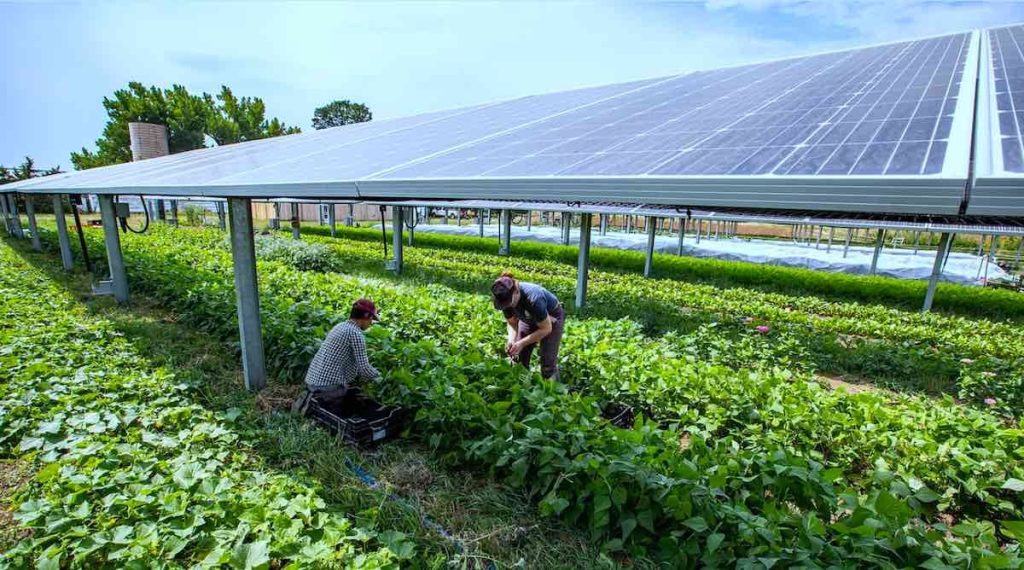
Agricultural solar energy is the use of solar energy to power agricultural activities, such as irrigation, crop production, or animal husbandry.
Agricultural solar energy can help increase the productivity, efficiency, and sustainability of the agricultural sector, by providing reliable and clean and affordable energy, water, and food.
Agricultural solar energy can also be either photovoltaic or thermal, depending on the application and the demand.
Some examples of agricultural solar energy are:
- Solar irrigation systems use solar pumps to draw water from wells, rivers, or lakes, and distribute it to the crops or the animals, using sprinklers, drip lines, or troughs.
- Solar greenhouses take advantage of solar collectors to heat water or air, and circulate it inside the greenhouse, to create a favorable microclimate for the plants, and extend the growing season.
- Solar dryers employ solar collectors to heat air, and blow it through the crops, such as fruits, vegetables, grains, or herbs, to reduce the moisture content and prevent spoilage.
- Solar refrigerators use solar cells to power compressors or solar thermal energy to power absorption chillers which in turn provide cooling for the storage and transportation of agricultural products.
- Solar fences use solar cells to charge batteries that power electric fences that protect the crops or the animals from predators or intruders.
Environmental Solar Energy
Environmental solar energy is the use of solar energy to power environmental applications, such as water treatment, waste management, or pollution control.
Environmental solar energy can help protect the environment, conserve natural resources, and improve the quality of life of the people and the ecosystems. Environmental solar energy can also be either photovoltaic or thermal, depending on the technology and the objective.
Some examples of environmental solar energy are:
- Solar water purification systems employ solar thermal energy to boil water or solar ultraviolet radiation to disinfect water, and remove pathogens, contaminants, or impurities, to make the water safe for drinking or other purposes.
- Solar waste treatment systems use solar thermal energy to incinerate waste or solar biological processes to decompose waste, and reduce the volume, toxicity, or odor of the waste, for disposal or reuse.
- Solar air purification systems take advantage of solar photocatalytic processes to oxidize air pollutants, such as volatile organic compounds, nitrogen oxides, or sulfur dioxide, and improve the air quality and the health of the people.
- Solar hydrogen production systems use solar photovoltaic or solar thermal processes to split water into hydrogen and oxygen, and effectively produce hydrogen gas, which is a clean and renewable fuel that can be used for transportation or energy storage.
- Solar carbon capture systems, using solar thermal or solar chemical processes to capture carbon dioxide from the atmosphere or from the flue gasses of fossil fuel power plants, and store it underground or convert it into useful products, such as fuels, chemicals, or plastics.
Solar energy is a versatile and valuable resource that can be used for various purposes, such as electricity, heating, cooling, lighting, or power.
Solar energy is also a clean and renewable energy source that can contribute to the reduction of greenhouse gas emissions, to mitigate climate change, and enhance energy security and independence.
Solar energy has many applications in different fields and sectors, such as residential, commercial, industrial, agricultural, and environmental, and can provide multiple benefits for the community, the economy, and the environment.
Explore the challenges of solar energy, including high initial costs, space requirements, weather dependency, and storage issues. This article delves into the common problems faced by solar energy users and offers insights into potential solutions and future prospects for sustainable energy.”
Solar Energy is the energy harnessed from the sun and used to generate electricity. It has proved to be a game changer when it comes to power alternatives.
In recent times, with an escalating energy crisis across the globe, people are becoming more inclined to use solar energy. The electricity generated is used for domestic purposes, powering electric appliances, and running industries and entire systems.
LET’S HELP YOU CHOOSE THE RIGHT SOLAR SYSTEM FOR YOUR HOME AND BUSINESS
Solar Solutions at Zero Cost: Government Rebated Installations! Invest in Sunshine with No Upfront Costs.
According to statistics, 4.4% of the global energy comes from solar power. As per the data of International Energy Agency (IEA), Solar PV generation increased by a record 270 TWh (up 26%) in 2022, reaching almost 1300 TWh.
Problems Associated with the Use of Solar Energy
The more widespread use of Solar Energy has led to an enormous debate. Despite its many benefits, solar energy comes with a few problems too that need to be considered.
By probing into the issues associated with solar energy usage, we can find better ways to tackle them and utilize this energy optimally. The wise usage of solar energy can mitigate such potential problems.
Here we will highlight a few major problems associated with the use of solar energy that need to be considered when choosing solar as a source of power generation.
1. Weather Dependence
Weather Dependence is a major issue associated with the use of solar energy. Solar panels work best in conditions of bright sunlight that fuel the generation of optimal amounts of electric power.
However, during foggy, cloudy or rainy days, the performance of solar panel systems gets highly compromised. According to Solar Alliance, solar panels don’t give their peak performance during cloudy or rainy days. Factors like clouds, rain, fog, and tree shade highly impact the extent of power generated.
To avail 24/7 power usage with solar energy systems, you need to a robust backup system to store energy during sunny days and use it on cloudy days and at night.
This makes you dependent on batteries for energy storage purposes. The production, maintenance, and disposal of these storage systems can have environmental and economic impact.
2. Expensive Installation
Solar Energy is expensive, incurring high installation upfront costs. This is due to the high costs of solar panel systems as well as the installation packages.
The cost of a solar panel system highly depends on the size of the system and quality of the parts. The installation costs are even higher due to energy storage needs. Site specific modifications may add significantly to the overall expenses of solar panel system installation.
Though many solar PV retailers offer discounts and governmental rebates to encourage solar energy usage, such discounts are limited to certain regions and states. Otherwise, purchasing and installing a complete solar panel system can get very expensive.
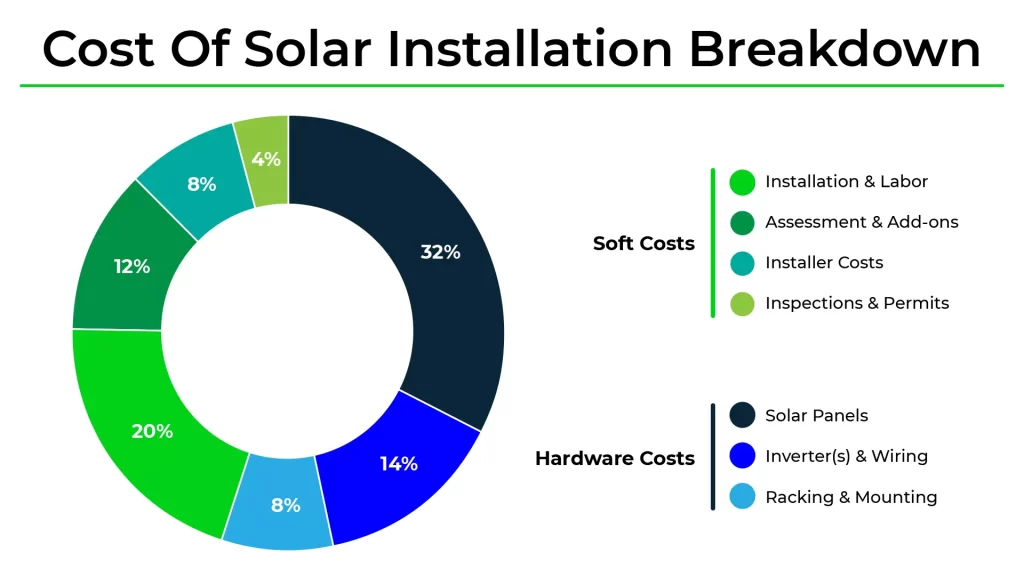
3. Environmental concerns associated with the use of solar energy
Solar energy is generally considered a cleaner more sustainable alternative to traditional fossil fuels.
However, it also comes with some environmental concerns. Evaluating the entire life cycle of solar technologies, from manufacturing to disposal, helps us understand their environmental impact.
Here are some environmental concerns associated with the use of solar energy:
Resource Extraction:
A wide range of raw materials like silicon, aluminum, silver and rare earth metals are extracted and processed to produce solar panels. The extraction of these materials causes disruption to natural habitats, pollution, as well as emission of greenhouse gases leading to harmful consequences.
Energy Intensive Manufacturing:
The manufacturing of solar panels, especially those based on crystalline silicon technology, requires a significant amount of energy. If the energy used during the manufacturing process comes from non-renewable sources, it can offset many environmental benefits of solar energy.
Chemical Use:
The solar panel manufacturing process involves the use of various chemicals, including solvents and toxic materials. These substances need to be handled carefully, as improper disposal or mishandling of these chemicals can lead to environmental hazards.
Land Usage and Habitat Disruption:
Large-scale solar installations usually require significant land use, potentially leading to habitat disruption and loss of biodiversity. Careful site selection and land-usage planning are essential to minimize these harmful consequences.
Such problems lead to potential environmental disruptions and tend to be a significant environmental concern associated with the use of solar energy.
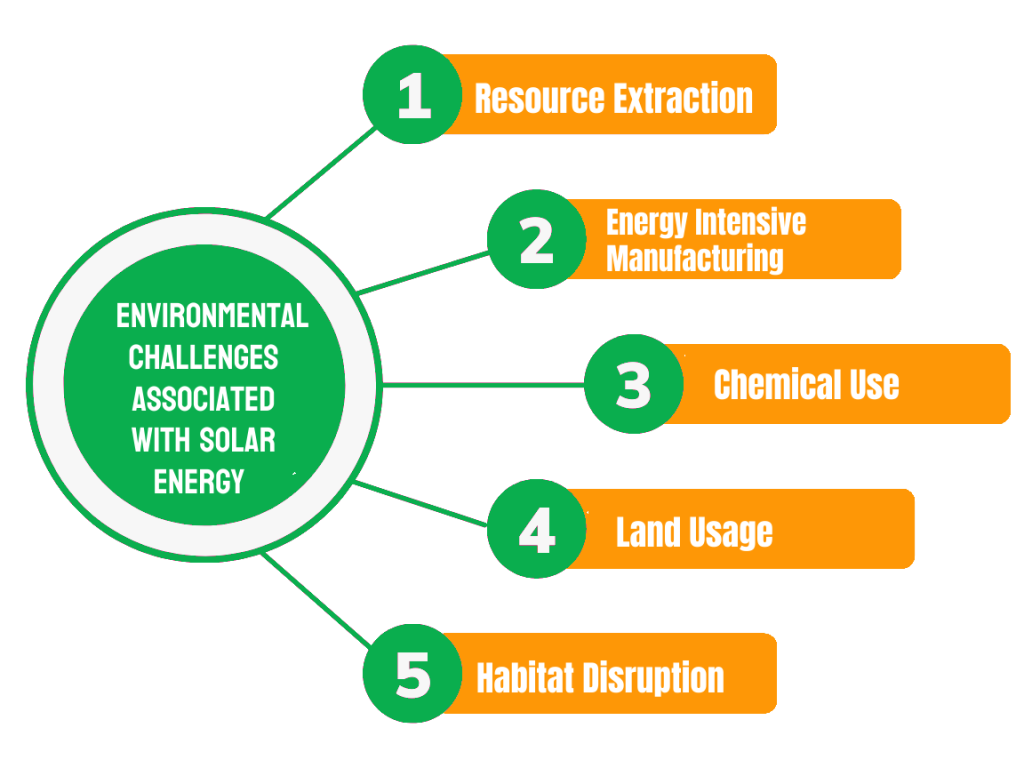
4. Compromised Performance in Some Regions
Solar panels systems don’t perform at their best everywhere around the globe. In many regions, their performance gets highly compromised because of the climate conditions and environment pattern.
Many European countries witness long seasons of winter and snowfall, lasting for more than 6 months.
During such seasons, sunlight exposure becomes quite minimal and solar panel systems fail to get stimulated enough to generate adequate amounts of power.
Where solar panel systems work at their maximum potential in bright and sunny regions, their performance gets highly impacted in cold areas. This makes their usage limited to regions that get plenty of bright sunny days.
Conclusion: Mitigating Solar Energy Challenges
Solar energy is increasingly in demand recently especially amid the global energy crisis. This is due to the incredible benefits associated with the use of solar panel systems as a means for power generation.
However, solar energy usage also comes with certain complications that need to be considered.
Solar Power generation is highly dependent on weather conditions and regional climate patterns. Solar panel installation can also be expensive and comes with certain environmental concerns too.
Hence, even though solar energy has a lot of benefits, it also has some drawbacks which should also be considered to harness optimal benefits.
So, you’re thinking about going solar and wondering if a 10kW system is right for your home. Well, you’ve come to the right place.
A 10kW solar power system is a great option for most average-sized homes and can meet nearly all your electrical needs while drastically reducing or even eliminating your electric bill. In this article, we’ll walk you through everything you need to know about a 10kW solar system so you can make an informed decision.
We’ll discuss how much energy a 10kW system will produce, how much you can save, the components involved, and options to choose from.
You may also want to know; 6.6KW Solar System
TAKE ADVANTAGE OF GOVERNMENT SOLAR REBATES AND REDUCE YOUR HOME ENERGY CONSUMPTION!
Solar Power Made Affordable: Government Rebates, Zero Upfront Fees. Embrace a brighter future with solar power.
By the time you’re done reading, you’ll feel confident enough to decide whether 10kW of solar power is the perfect solution for your home or not. The sun is shining, and savings are waiting—let’s get started!
What Is a 10kW Solar Power System?
A 10kW solar power system is a solar photovoltaic system with a rated power output of 10 kilowatts. That’s a pretty sizable system that can generate a lot of free and clean energy from the sun.
A 10kW solar power system is a collection of solar panels and related equipment that can generate up to 10 kilowatts (kW) of electrical power when exposed to sunlight
How much will it cost?
The total cost of a 10kW solar power system can range from $15,000 to $30,000 depending on the components and installation fees in your area.
However, the good news is you’ll get back much of that cost through energy bill savings and government rebates like the Small-scale Technology Certificates (STCs).
How Many Solar Panels Are Needed for 10kW?
To generate 10kW of power, you’ll need quite a few solar panels. Typically, 10kW systems use between 20 to 40 panels, depending on the wattage of the panels.
Panel Sizing
For residential systems, panels usually range from 250 to 365 watts. So, using 250W panels, you’d need around 40 panels to reach 10kW. With higher wattage 365W panels, you can get by with only 28 panels.
The exact number will depend on factors like your location’s sunlight levels and your own energy needs. It’s best to get an estimate from an installer to determine how many panels you’ll require.
Panel Types
The two most common types are monocrystalline and polycrystalline. Mono panels are made of single silicon crystals and tend to be slightly more efficient, but also more expensive.
Poly panels use multiple crystals and are a little cheaper, though they require more space to produce the same output. Either type will work well for a 10kW system.
Panel Placement
How the panels are positioned also impacts the total power generated. For maximum efficiency, panels should face south and be installed at an angle of 30 to 40 degrees.
If limited by your roof pitch, panels can still produce good results within 20 degrees of south and at a 10-to-50-degree angle. The ideal setup is having panels unobstructed by shade, with consistent sunlight throughout the day.
What Can a 10kW Solar System Run?
A 10kW solar system is a great size for most homes and can power a lot of your essential appliances and electronics. Here’s what a typical 10kW solar power system can run in your home:
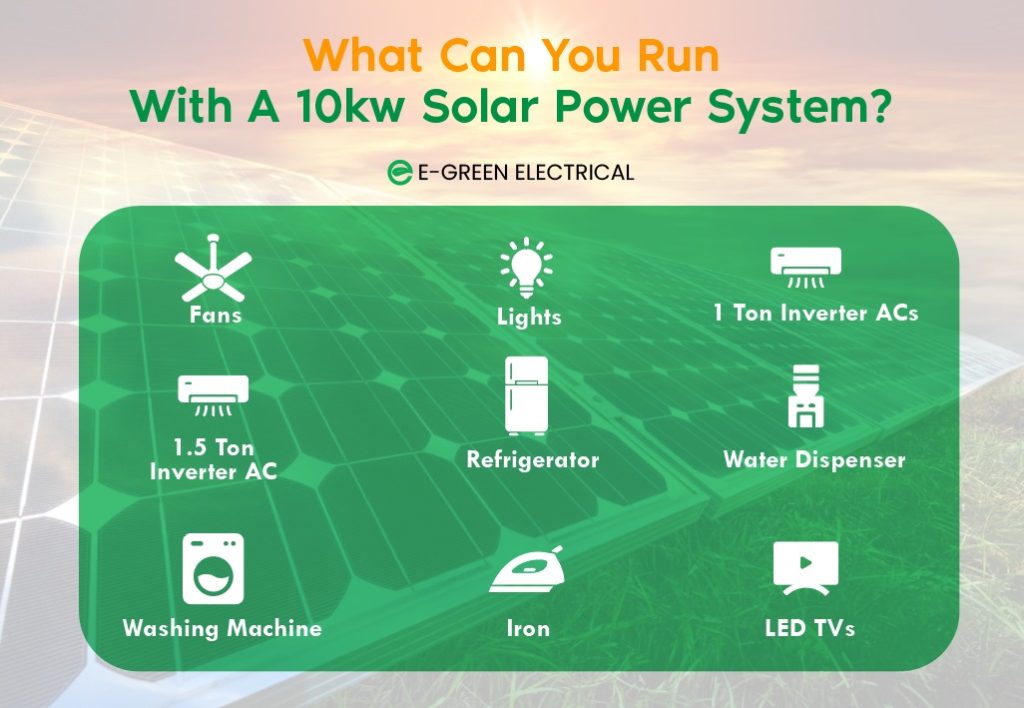
Lights
A 10kW solar system can easily power all the lighting in an average-sized house, including LEDs, CFLs and incandescent bulbs. LED lights are the most efficient, so switching to LEDs will allow you to save solar power for other devices and appliances.
Refrigerator
The average refrigerator uses around 1kW per day, so a 10kW solar system can run a fridge and freezer with energy to spare for other appliances.
Electronics
You can power a TV, laptops, phone chargers, and other small electronics. Gaming consoles and desktop computers will use more energy, so you may need to limit usage to peak sunlight hours.
Washer and Dryer
An efficient washer and dryer can operate on a 10kW solar system, especially if you run the loads in the middle of the day when your solar panels are producing the most power.
However, try to avoid running the dryer for long periods on hot days when your air conditioner is also running.
Air Conditioning
A 10kW solar system may be able to power a small window AC unit for a few hours a day during the summer, but likely won’t run a central AC system for an entire house. Use fans and open the windows when possible, instead of relying only on AC.
Pool Equipment
For those with an in-ground pool, a 10kW solar system can run the pump and filter during the day, but may not power heating and cleaning equipment for long periods. Use a pool cover when possible to minimize heat loss and energy usage.
Cost and ROI of a 10kW Solar System
When first setting up a solar system, the largest upfront costs are those associated with the solar panels themselves, as well as the inverter that converts the DC power from the panels to AC power for your home.
You’ll also need mounting equipment, wiring, disconnects, and other balance of system components. Installation labor costs also make up a significant portion of the total. Many homeowners take advantage of the federal solar tax credit to offset some of these costs.
Savings and Return on Investment
Once your system is up and running, you can expect to save hundreds per month on your electric bill, depending on utility rates in your area and how much of your home power the system can produce.
A 10kW system will generate an average of 15,000 kWh per year, which could power a typical home almost entirely.
The time it takes to recoup your initial investment through energy savings and payback the cost of the system is known as the “return on investment” or ROI. For a 10kW residential solar system, you can expect an ROI of 6 to 12 years. The exact payback period will depend on factors like:
- System cost and available rebates/incentives
- Amount of sunshine in your location (more sun means more energy production)
- Utility rates (higher rates mean bigger savings)
- Increases in utility rates over time (which will shorten your payback period)
Choosing the Right 10kW Solar System Components
For a 10kW system, you’ll want 30-40 panels rated at least 250-330W each. Higher wattage panels take up less space but tend to cost more. Compare different panel brands based on wattage, size, and warranty. Look for panels with at least a 25-year power warranty and product warranty.
Inverter
The inverter converts the DC power from your panels into AC power for your home. For a 10kW system, you should choose a string inverter rated at least 10kW or microinverters with a combined rating of 10kW or more. String inverters are more affordable but if one fails the whole system goes down.
Microinverters cost more upfront, but each one operates independently so the system continues working if one fails.
Battery (Optional)
Adding a battery backup allows you to store excess solar energy for use when your panels aren’t producing energy at night or during an outage. Batteries also provide backup power in an emergency.
Choose a lithium-ion battery rated at least 10kWh for a 10kW system. While batteries increase upfront costs, they maximize your system’s potential and energy security.
Other components include a charge controller, racking system for panels, combiner box, disconnects, and wiring. Work with a reputable installer to determine what specific components are right for your needs and location.
They can help you compare options and find the optimal, high-quality parts to power your home for decades to come.
Conclusion
While it may seem like a big upfront investment, the long-term savings and energy independence make going solar worthwhile. Once installed, you’ll enjoy decades of free, clean power and significantly lower energy bills. The planet and your wallet will thank you.
LET’S HELP YOU CHOOSE THE RIGHT SOLAR SYSTEM FOR YOUR HOME AND BUSINESS
Solar Solutions at Zero Cost: Government Rebated Installations! Invest in Sunshine with No Upfront Costs.
When you start considering having solar panels installed, you will probably have concerns about how much upkeep they need.
Solar panels are somewhat low-maintenance compared to some other household systems; however they still require some maintenance to operate effectively and efficiently over their lifetime.
The good news is that your solar panels can produce sustainable energy for 25–30 years or longer with moderate but regular preventative maintenance.
You’ll maximize the energy production and return on your investment you get from your environmentally friendly solar power system by adhering to the maintenance recommendations.
TAKE ADVANTAGE OF GOVERNMENT SOLAR REBATES AND REDUCE YOUR HOME ENERGY CONSUMPTION!
Solar Power Made Affordable: Government Rebates, Zero Upfront Fees. Embrace a brighter future with solar power.
How Much Maintenance Do Solar Panels Need?
Solar panels are designed to operate with minimal maintenance for decades. However, to ensure optimal efficiency and performance, some basic care and servicing is required.
The panels themselves are static with no moving parts, so they do not need frequent maintenance. However, it is recommended to visually inspect them once a month to check for any damage or dirt buildup and perform an annual professional inspection and cleaning.
Any debris, dirt or dust on the panels can reduce their efficiency, so keeping them clean is important.
The inverter, which converts the direct current (DC) from the solar panels into alternating current (AC) used in your home, does require occasional maintenance. It is best to have a certified professional inspect it once a year. They will check connections, test components and ensure optimal performance.
If you use batteries to store excess solar energy, they will require the most frequent maintenance. They need to be inspected monthly to check battery levels and connections. Most battery systems will require replacement every 5 to 10 years. Properly maintaining and replacing batteries is key to a well-functioning solar energy system.
Common Solar Panel Maintenance Tasks Explained
To keep your solar panels running efficiently for decades, some basic maintenance is required. Performing the following tasks regularly will help maximize your solar panel system’s performance and return on investment.
Inspecting and Cleaning Solar Panels
It is recommended to visually inspect your solar panels at least twice a year, in the spring and fall. Look for any damage, dirt or debris on the panels and clear it.
Panels can easily get covered in dust, pollen, and bird droppings which will reduce their ability to absorb sunlight. Use a soft brush to gently sweep panels clean and a mild detergent if needed. Take care not to scratch the panels.
Tightening Connections
Ensure all wiring connections in your solar panel system are securely fastened. Loose or improperly connected wiring is dangerous and reduces efficiency. Tighten any loose nuts, bolts, and terminal screws connecting panels to rails, rails to the racking system, and all wiring connections in the system.
Checking Inverters
Inverters are responsible for converting the DC power from your solar panels to usable AC power for your home. Inspect inverters for any damage or excess heat which could indicate issues.
Most inverters have built-in self-monitoring that will alert you to any malfunctions. It is still a good idea to physically check inverters yourself to ensure proper operation.
Tips for Keeping Your Solar Panels in Good Condition
To maximize the efficiency and lifespan of your solar panel system, it’s important to properly maintain the panels. While solar panels are low-maintenance relative to other energy sources, some routine care and cleaning will help them function optimally for decades.
Perform regular inspections of your solar panels, inverters, wiring, and mounts. Look for any damage or debris that could impact performance or safety.
Have a professional evaluate the system if you notice any issues. It’s best to inspect the panels at least once every 3-6 months, or more often if your area experiences extreme weather.
Keep your solar panels clear of dirt, leaves, snow, and other debris. Wipe down the panels with a soft cloth, sponge, or brush and water.
For stubborn stuck debris, use a mild detergent. Be very gentle to avoid scratches. Buildup on the panels can reduce energy production by up to 15% per year if left unaddressed.
Check that all wiring and connections are securely fastened and show no signs of damage or corrosion. Have an electrician repair or replace any compromised components immediately.
Ensure all mounts and racking remain properly installed and structurally sound. Secure any loose parts to prevent instability or collapse.
In areas with heavy snowfall, install snow guards or deflectors and frequently remove snow from panels. The weight can damage the panels and mounts, and the snow inhibits light absorption.
Maintaining the solar panel- Final take
Solar panels need maintenance and care to operate properly and optimally, although the average homeowner’s workload is quite low.
Even though solar panels are outside, you can extend their lifetime with routine maintenance (a few times a year cleaning and inspections) to ensure they continue serving you for decades.
Solar panels provide an opportunity to rely less on fossil fuels and minimize energy costs in exchange for time and financial investment.
Although there are always risks associated with new technology, solar energy has been well-established and is still improving in terms of effectiveness, cost, and accessibility.
You can feel confident about using solar energy to power your home if you keep up with the latest recommendations for solar panel upkeep and care.
LET’S HELP YOU CHOOSE THE RIGHT SOLAR SYSTEM FOR YOUR HOME AND BUSINESS
Solar Solutions at Zero Cost: Government Rebated Installations! Invest in Sunshine with No Upfront Costs.
As an Australian homeowner, it’s great that you have decided to adopt a solar solution in the land Down Under. While soaking in the sun and surfing may be some of the top national pastimes, harnessing UV rays for energy production is an essential bonus.
However, before you rush to install a system on your roof, you should understand how much energy you can expect to produce from those panels.
The following article will allow you to make the best from rooftop solar panels in Australia.
How Solar Panels Work to Produce Electricity?
TAKE ADVANTAGE OF GOVERNMENT SOLAR REBATES AND REDUCE YOUR HOME ENERGY CONSUMPTION!
Solar Power Made Affordable: Government Rebates, Zero Upfront Fees. Embrace a brighter future with solar power.
Photovoltaic Cells
These cells contain silicon layers treated with chemicals that absorb sunlight and convert the energy into direct current (DC) electricity.
The Photovoltaic Effect
When sunlight hits the PV cells, the energy knocks electrons loose from their atoms, allowing them to flow freely.
This flow of electrons creates an electric current – also known as the “photovoltaic effect.” The more intense the sunlight, the more electrons are knocked loose and the stronger the electric current is.
Direct Current to Alternating Current
The DC electricity produced by the PV cells is not compatible with most home appliances nor with the power grid.
An inverter converts the DC into an alternating current (AC) that households can use. The inverter also helps optimize the energy for peak efficiency.

Solar Energy in Australia
Australia has abundant solar resources and enjoys some of the highest solar irradiance levels in the world. As a result, solar energy plays an increasingly important role in Australia’s energy mix.
Installed Solar Capacity
The Clean Energy Regulator claims that at the beginning of 2020, Australia had more than 2.2 million rooftop solar photovoltaic (PV) systems installed, with a total output capacity of more than 10 gigawatts.
This is over 20% of Australia’s National Electricity Market’s total power-producing capacity.
The major contributor is rooftop solar systems serving the residential sector. This represents more than 60% of the installed small-scale solar PV capacity. The Australian government aims to source 33,000 gigawatt-hours of Australia’s electricity from renewable sources by 2024.
Solar and wind installations will be the two key contributors; multiple government rebates and incentive programs have led to a very rapid growth in residential and commercial solar installations over the past decade.
Factors Affecting Solar Panel Output
The amount of power generated by solar panels depends on several factors that vary significantly based on geographic location and time of year.
1. Panel position
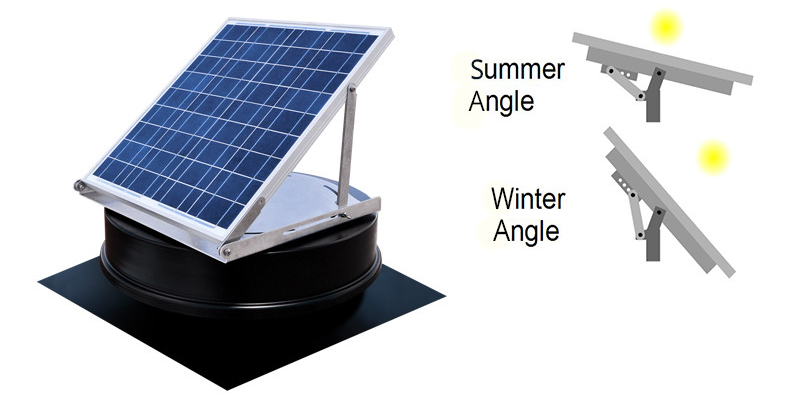
How you position your panels can directly increase or decrease their productivity. Installing them at an angle that maximizes exposure to direct sunlight during the middle of the day will yield the highest output. In Australia, a tilt angle of 20 to 30 degrees is typical.
Facing panels north is ideal for maximum sun exposure. East or west-facing panels will still work but may produce slightly less energy, especially during the morning or the afternoon.
2. Geographic Location and Climate
The location and climate of the area determine the intensity and the duration during which the solar panels receive sunlight.
Locations near the equator experience more direct sunlight than those at higher latitudes, which allows them to produce a higher solar panel output.
Desert climates typically have more days of clear weather and less cloud coverage than temperate climates, positively impacting solar panel performance.
3. Panel efficiency
The type of solar panels you choose also affects how much power they use. Higher efficiency panels, such as monocrystalline silicon models convert a higher percentage of sunlight into energy compared to less efficient polycrystalline panels.
Of course, more efficient are more expensive, so you’ll need to weigh the costs versus potential energy savings.
Average Daily Solar Radiation in Australia
This section explains how much vitamin D your solar panels are likely getting in Australia. Australia’s sun-drenched climate means solar panels can soak up significant sunlight rays and churn out a lot of kilowatt-hours.
But the amount of sun exposure varies quite a bit depending on where your panels are located in Australia.
The sun beams down aggressively in the tropical north. Darwin averages over 9 hours of bright light daily, so panels will be cranking out the maximum wattage on most days. Melbourne and Sydney still get a solid 6-7 hours of direct light daily for a good portion of the year.
The further south you go, the more inconsistent the sun becomes.
In chilly Hobart, solar panels receive approximately 5-6 hours of high intensity sunlight during the summer and just 3 hours of direct light in the winter.
Output: there may be more than one option and output level.
And let’s not even talk about the southern alpine regions where the sun peeks out only to duck right behind a snow drift. Panels in the snowfields might become shut-ins for much of the year.
The good news is that overall, Australia’s solar radiation levels are still quite high compared to many parts of the world.
Even in the southern states, the sun emits much energy when shining. According to Australia’s solar atlas, Hobart still averages over 5 kilowatt-hours of solar radiation per square meter per day annually.
So, while your panels may not receive long periods of quality sunlight down south, the time during which they operate will make them rather productive.
Calculating Average Solar Panel Output
To calculate the average daily output of a solar panel system in Australia, you must consider several factors, such as the panel wattage, hours of peak sunlight, and seasonal weather variations.
Panel Wattage
The wattage of your solar panels determines their maximum power output.
For example, a 5kW system with ideal conditions can produce up to 5,000 watts (5kW) of AC power per hour. However, the output is usually lower based on available sunlight and weather.
Australia’s climate ensures ample sunlight, especially in northern areas, so a residential system is typically sized between 3kW to 10kW. The final wattage depends on your average energy consumption and available roof space.
Hours of Peak Sunlight
The hours of peak sunlight – typically 10 a.m. to 3 p.m. – are the periods when your solar panels produce the most power. In Australia, you can expect 4 to 6 hours of peak sunlight daily, depending on the season and location. More sunlight means a higher daily output.
Practical Implications
Understanding your area’s average daily energy output from your solar panels will allow you to make the most of your solar installation.
Calculating System Requirements
Knowing your region’s average solar panel output per day helps determine how many panels you need to power your home.
Compare the average daily kWh output of panels to your average daily energy consumption to calculate the proper system size for your needs.
Under-sizing your system will mean it won’t produce enough energy whereas oversizing it is costly and often unnecessary.
Maximizing Energy Production
Using data on the peak hours of sunlight and the maximum panel output, you can take steps to maximize your energy production.
For example, run high-energy appliances like the dishwasher, washing machine, or pool filter when your panels are producing their highest output in the middle of the day. Consider a tracking system for your panels to follow the sun throughout the day.
Wrapping Up
This guide offers a scientific insight into how much radiation you can expect to receive if you adopt a solar solution system in Australia.
Still, the figures may not be as high as you had imagined when you took the first step. The reality is that solar panels can still provide a sizable portion of your energy needs and save you greatly on energy costs.
Not to mention, you get to take action and do what is good for the planet.
Granted, there will be days when the panels sit idly like expensive lawn ornaments, but over a year, they will provide a decent return for their investment. Any energy you can harvest from the sun for free is energy you don’t have to pay for. And that is what makes going solar worth it.
LET’S HELP YOU CHOOSE THE RIGHT SOLAR SYSTEM FOR YOUR HOME AND BUSINESS
Solar Solutions at Zero Cost: Government Rebated Installations! Invest in Sunshine with No Upfront Costs.
Step into the sunny world of Australia, where the sky stretches wide, and the sun’s warm embrace is a daily gift. Now, imagine this: turning that golden sunshine into a power source for your home.
All that’s possible with solar energy– converting sunlight into electricity that brightens your life and ensures financial savings.
TAKE ADVANTAGE OF GOVERNMENT SOLAR REBATES AND REDUCE YOUR HOME ENERGY CONSUMPTION!
Solar Power Made Affordable: Government Rebates, Zero Upfront Fees. Embrace a brighter future with solar power.
But what’s even more exciting is that the time it takes to make this solar switch is right now.
Think of this article as your guide to seven great reasons why Australian homes should embrace the solar adventure. In order to achieve a future full of cleaner energy, smaller bills, and a healthier planet.
1. Solar Panels Have Never Been More Affordable
Going solar has never been more affordable for Aussie homeowners. Panel prices have dropped over 10% in the last decade, and installation costs are decreasing too.
There are multiple payment options to choose from that make solar adoption a budget-friendly endeavor; like low-interest loans, leasing, or power purchase agreements where you only pay for the energy your panels produce.
The solar panels themselves have a low maintenance cost. They have no moving parts, so once installed they just sit on your roof silently generating free, green energy for decades.
2. Electricity Prices Keep Rising, but Solar Locks in Low Rates
The cost of grid electricity has been going up every year. Alternatively, once you install solar panels, the energy they produce is free.
You’ll lock in low electricity rates for the next 20-25 years. Your solar system will produce free power during the day reducing your dependence on the grid.
You’ll only pay for electricity at night or when your demand is higher than your system output.
Going solar helps shield you from increasing electricity prices. You know exactly how much you’ll pay for power over the life of your solar system.
As grid rates continue to rise, your solar panels can end up paying for themselves even faster. The savings add up significantly over time.
3. Grid Independence
Going solar means you’re no longer reliant on the main power grid for your home’s electricity. When you install solar panels on your roof, the energy from the sun is converted into electricity to power your house.
This means the electricity company can no longer control how much you pay for power or when you have access to it.
Energy freedom
With a solar power system, you’ll produce your own renewable energy. You’ll gain more control and stability over your electricity costs.
Energy prices continue to rise, but when you install a solar solution, you can lock in lower power rates for years to come. You’ll also be less impacted by any future price hikes from the energy companies, or from unstable geopolitical siuations.
Resilient power
If there’s an outage on the main grid, your home will stay powered thanks to the energy stored in the batteries of your solar system.
You’ll have backup power ready for when you need it most. Your solar system also continues working even if power lines are damaged by storms or accidents.
Be prepared
Australia’s summers are getting hotter, and demand for electricity is increasing. Our power grids can often struggle to cope with rapid spikes in demand on the hottest days, often leading to grid failures.
With a solar system, you’ll have your own source of energy to keep you comfortable even during peak times. You’ll be ready for whatever the summer brings.
4. Solar Adds Value and Appeal to Your Home
Going solar is an investment that pays off. Adding solar panels to your home’s roof increases its value immediately. Buyers are willing to pay more for an energy-efficient house with lower power bills.
Homes with solar panels tend to sell for a higher price. Solar adds value because the new owners will benefit from lower electric bills and an environmentally friendly power source.
5. Help the Environment
Helping the environment is one of the main reasons to install a solar solution now for any Aussie homes. Using the sun’s energy to power your home translates in lower pollution.
When you use solar panels, you lower your carbon footprint. The sun’s energy is renewable and unlimited. It doesn’t pollute the air or water.
6. Aussie Dollar Uncertainty
The Aussie dollar is continuosly fluctuating. While the dollar is down, solar equipment and components will cost Australians less .
If the dollar goes back up again, solar equipment could increase in price by 10-30% or more. So buying now locks in today’s lower costs and protects you from future price rises if the dollar recovers.
Many solar companies also import components and finished products from China and the US. When the Australian dollar is weak, it’s cheaper for them to buy these goods.
Often they pass on most of the savings to customers. So you’ll probably get a better deal on a solar system while the dollar is down.
7. Generous Subsidies Available
The Australian government currently offers generous rebates and incentives for homeowners who go for a solar solution. Now is the perfect time to take advantage of these offers before they decrease or are removed.
Rebates and Discounts
The Small-scale Renewable Energy Scheme (SRES) gives you money back for installing solar panels. You’ll get a rebate and the price of your system will be lower.
The rebate amount depends on the size of your system and its location. You can save between $2,000-$4,000 on average for a typical household system.
Feed-in Tariffs
Feed-in tariffs (FiTs) are payments from your energy retailer for the excess solar energy you export to the grid. FiTs vary according to state but you can typically earn 6-16 cents per kilowatt hour.
These earnings can further reduce your power bill. Some retailers offer higher FiTs to win your business so make sure you run your calculations based on offers from multiple retailers.
Zero Interest Loans
The government’s interest-free Green Energy Loans allows you to borrow the full cost of your solar system and pay it back over time with no interest charges.
You just pay back the loan amount in installments added to your rates. This makes going solar easy and affordable.
Tax incentives
When you claim your solar installation costs on your taxes, you can get incentives like accelerated depreciation deductions. Your accountant can give you the details that match your situation.
Conclusion
The benefits of solar power in Australia today are clear.
With rising energy prices, deteriorating climate changes , and rapidly improving solar technology, now is the perfect time to take control of your energy bills and help the planet. Going solar has never been more affordable or accessible for homeowners.
Make the switch and start saving thousands each year, gain energy independence, and do your part for the environment. The future is bright for solar in Australia. Take advantage of the many incentives and programs available now to join the solar revolution.
LET’S HELP YOU CHOOSE THE RIGHT SOLAR SYSTEM FOR YOUR HOME AND BUSINESS
Solar Solutions at Zero Cost: Government Rebated Installations! Invest in Sunshine with No Upfront Costs.
Solar battery storage refers to batteries that can store excess electricity generated during the day by rooftop solar systems.
The stored solar energy in the batteries can be used at night or during blackouts and power outages. So, solar battery storage provides homeowners with energy independence and security.
The most common types of batteries used for home solar storage are lithium-ion batteries – the same battery technology used in laptops, phones, and electric vehicles.
TAKE ADVANTAGE OF GOVERNMENT SOLAR REBATES AND REDUCE YOUR HOME ENERGY CONSUMPTION!
Solar Power Made Affordable: Government Rebates, Zero Upfront Fees. Embrace a brighter future with solar power.
Popular solar battery options in Australia include Tesla Powerwall, Alpha ESS, LG Chem, and Sonnen. A typical solar battery for a household system has a usable capacity of 5-15 kilowatt-hours.
How Does Solar Battery Storage Work?
A solar storage battery is connected to the home’s rooftop solar PV system, by either AC or DC coupling. During the day, when the solar system generates more power than needed, the excess solar electricity is stored in the battery.
Then, in the evening, when solar generation is reduced, stored energy can be drawn from the battery to power home appliances, lights, etc.
Solar homes with battery storage rely much less on the electricity grid by using more of their own stored solar power. Batteries also provide backup power during blackouts.
Smart software manages the solar battery system, optimizing solar self-consumption and grid interaction.
What Are the Benefits of Adding Battery Storage?
There are several benefits that battery storage offers for homes and businesses whether they have existing solar panels or are planning to install a new solar and storage system:
- Increase solar self-consumption – With batteries, much more solar energy is used directly in the home rather than exported. This provides greater energy independence.
- Avoid peak demand charges – Using solar energy stored in batteries reduces peak usage from the grid when electricity rates are highest. This can help you save on your power bills.
- Backup power during blackouts – Battery systems provide emergency backup to keep essential lights, appliances, and devices powered during grid outages.
- Increase energy independence & bill savings – Solar batteries allow greater energy independence where you can use the stored power in your batteries, reducing reliance on the grid and energy bills.
- Virtual power plant participation – Get paid for feeding your stored solar energy to the grid by collectively discharging batteries when needed.
Are Solar Batteries Worth the Investment?
The biggest question among many Australian households and businesses is whether adding a solar storage battery is worth the cost.
Solar battery storage does involve a significant upfront investment, where an average lithium-ion battery system installation costs between $8,000 to $15,000.
However, batteries can provide excellent return on investment over their lifespan by increasing solar self-consumption and avoiding peak grid power rates.
Solar batteries make the most economic sense for properties with high daytime usage.
The payback period depends on factors like your existing solar system size, electricity tariffs, power usage patterns, and battery size.
Generally, it’s estimated solar batteries can provide a payback over 5–10 years for typical households. Payback would be faster at under 5 years for larger battery systems above 10 kWh.
Battery costs are also expected to continue falling, improving the cost-benefit equation.
So, solar storage is becoming a smart investment for many Australian households, especially as blackouts become more frequent.
What Size Solar Battery Do I Need?
Choosing the right battery size is important to maximize the benefits.
Your ideal solar battery capacity depends on factors like your existing solar system size, energy usage patterns, tariff rates, and budget. As an approximate guide:
- 5 kWh battery: suitable for 1-2 kW solar systems, provides partial backup for essentials.
- 10 kWh battery: Suitable for 4-6 kW solar, provides full overnight power backup.
- 15 kWh+ battery: This provides multi-day power backup for larger 6 kW+ solar systems.
Many providers offer software tools to help you select the optimal battery size for your home’s needs and budget.
It’s best to undersize slightly rather than oversize your solar battery. Oversized batteries cost more but provide less economic benefit.
Installing Solar Battery Storage
Adding a solar storage battery to an existing solar PV system is just matter of a straightforward battery retrofit.
A lithium battery is installed alongside or under the solar inverter and connected via AC or DC coupling.
AC coupling is simpler as it doesn’t require any changes to the PV array. Your solar installer will fully configure and integrate the system.
New solar and storage systems are also easy to install, with the battery component integrated.
Make sure to choose a reputable solar installer who is experienced with storage installations and can advise on optimal sizing for your home. Ask for multiple quotes comparing quality battery brands like Tesla, Sonnen, LG, and Alpha ESS.
The Outlook for Solar Batteries
As solar power has gone mainstream in Australia, solar battery uptake is rapidly increasing.
Market analysts forecast that by 2030 over 2 million Australian homes could have solar battery storage installed. This distributed battery storage is helping stabilize grids and reduce reliance on gas peaker plants.
Key factors driving strong growth in home batteries include:
- Rising electricity prices
- Concerns over blackouts as old coal plants are shut down
- Incentives for adding storage and improving battery economics
As costs continue to fall, payback periods will become even more attractive. So, for many Australians, solar battery storage is now a wise investment to maximize their solar energy usage, lower their bills, and provide greater energy reliability.
Types of Solar Batteries
There are a few main types of batteries used in residential solar storage systems:
Lithium-ion batteries: The dominant choice, lithium-ion batteries provide high efficiency, lifespan, and safety. Major brands like Tesla Powerwall use lithium-ion.
Lead-acid batteries: A cheaper but less durable option than lithium-ion, can have faster discharge rates. It’s only suited to smaller solar systems.
Saltwater batteries: Newer technology using saltwater electrolytes, non-flammable and sustainable but lower energy density.
Flow batteries: Two liquid electrolytes store energy on a larger scale suitable for businesses. It has higher upfront cost but longer lifespan than other types.
In short, Lithium-ion is generally the best technology for home installations when selecting a solar battery, thanks to its balance of performance, lifespan and safety.
Common Solar Battery Brands
A wide range of battery brands and models are available from manufacturers worldwide. Some of the most popular solar batteries found in Australian homes include:
- Tesla Powerwall – Sleek modular lithium battery designed by Tesla Motors. It’s high quality and comes with a warranty.
- sonnenBatterie – German lithium battery with eco and smart options. It has proven high performance.
- Alpha ESS – Budget lithium battery suited to smaller solar systems. It’s good value overall.
- LG Chem RESU is a reliable lithium battery from electronics giant LG with a slim modular design.
- Fronius Solar Battery – Designed specifically for Fronius hybrid inverters. It uses Lithium-ion technology.
- Ampetus Super Lithium – Australia assembled lithium battery range, very customizable sizing.
When comparing different solar battery products, look at specs like depth of discharge, roundtrip efficiency, cycle warranty, size, and price.
It is also important to choose an experienced installer familiar with installing your preferred battery brand.
Adding Storage to Existing Solar
For homeowners who already have solar PV installed, adding a solar storage battery can further maximize your system’s benefits.
Storage retrofits overcome the common issue of wasting excess daytime solar generation.
Installing batteries with an existing solar system is straightforward. Your installer will mount the battery unit on a wall or ground stand and then connect it to the solar inverter via AC or DC coupling.
AC coupling is simpler as it doesn’t require reconfiguring the solar array.
Your new battery capacity should match your average daily solar generation. For example, a 5kW solar system would suit a 10kWh battery.
Your installer can best advise on the right sizing and integration of the new system. Enjoy using more of your solar energy by adding a solar storage battery to your system!
LET’S HELP YOU CHOOSE THE RIGHT SOLAR SYSTEM FOR YOUR HOME AND BUSINESS
Solar Solutions at Zero Cost: Government Rebated Installations! Invest in Sunshine with No Upfront Costs.
So you’re thinking of adopting a solar solution and are wondering which type of solar system is right for you?
That is a great decision – solar energy is a smart investment for your home and the environment. The two most common types of panels are monocrystalline and polycrystalline.
While both will get the job done, there are notable differences to consider before making a choice, depending on your needs and budget.
Also read; Do Solar Panels Work on Cloudy Days?
Monocrystalline panels are the most efficient, so you’ll need fewer items to power your home, however they tend to cost more.
TAKE ADVANTAGE OF GOVERNMENT SOLAR REBATES AND REDUCE YOUR HOME ENERGY CONSUMPTION!
Solar Power Made Affordable: Government Rebates, Zero Upfront Fees. Embrace a brighter future with solar power.
Polycrystalline panels are a bit cheaper, although they are slightly less efficient. They work great for most homes and the difference in performance is often negligible. At the end of the day, either option will ensure a significant reduction of your electric bill and your carbon footprint.
The choice eventually comes down to how much space you have and how much money you are willing to spend. Ready to go solar? We’ll give you all the details to help you pick the best panels for your place.
Monocrystalline Solar Panels: High Efficiency, Higher Cost
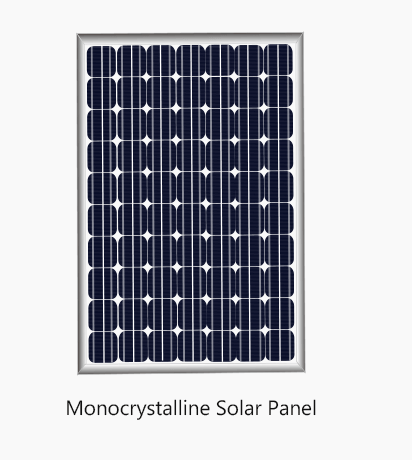
Monocrystalline solar panels are made from high-purity silicon that is molded into bars to form a uniform crystal structure. This highly efficient design means each panel can convert a higher percentage of the sun’s energy into electricity. The downside? They tend to cost a bit more.
If maximum efficiency and performance are your top priorities for a solar power system, monocrystalline panels are probably your best choice.
Their higher silicon purity and uniform crystal structure mean they can achieve efficiency rates of up to 22% or more, producing more kilowatt-hours of electricity from the same panel surface area.
However, the higher quality silicon cells and the complex manufacturing processes are achieved at a cost.
Monocrystalline panels are generally the most expensive option, often 20-30% more expensive than polycrystalline panels. The good news is that as technology improves, costs for these premium panels are expected to reduce.
Many homeowners and businesses choose monocrystalline panels when their main target is high performance and long-term reliability and when budget is less of a concern.
If you have limited space for installing the panels, their higher efficiency can ensure a higher amount of energy. Performance and quality also mean a longer lifespan, often 25-30 years.
Polycrystalline Solar Panels: Lower Cost, Slightly Lower Efficiency
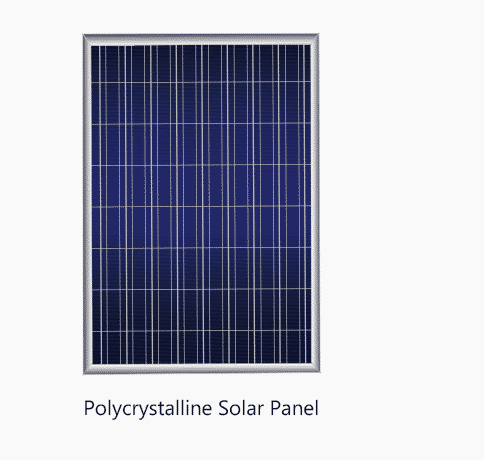
Polycrystalline solar panels are the more affordable option if you’re on a budget. They’re made of silicon fragments melted together, so they’re not quite as efficient as monocrystalline panels.
However they can still produce plenty of energy for most homes and the lower cost may make the installation more worthwhile.
Poly panels typically convert 15-20% of the sunlight they receive into electricity, while mono panels are usually 16-22% efficient. So with the same number of panels, poly panels may generate a bit less power.
However, poly panels are often larger in size, so if you have the space, you can install more panels to make up for the difference.
The fragmented silicon in poly panels causes some light to reflect off the surface, reducing absorption.
They’re also more susceptible to light-induced degradation over the years, which causes them to lose efficiency at a faster rate.
However, most poly panels are guaranteed with 25-year performance warranties and will continue producing energy for decades.
If budget is a primary concern, then a polycrystalline solar solution is probably your best option.
You’ll still get plenty of clean energy and achieve savings, just at a lower overall cost. And as technology improves, the efficiency and longevity gap between poly and mono panels is expected to shrink.
Other Factors to Consider: Aesthetics, Temperature Coefficient, Space Requirements
When deciding between monocrystalline and polycrystalline solar panels, a few other factors are worth considering before you make your final choice.
Aesthetics
If appearance is important for your installation, it is worth noting that monocrystalline panels tend to look more high-tech and uniform since the cells are all the same size and shape.
Polycrystalline panels have a speckled blue appearance due to the random orientation of the silicon crystals.
However for some homeowners, this mosaic-like look is appealing and gives more character. It comes down to your personal preference in terms of aesthetics.
Temperature Coefficient
The temperature coefficient refers to how much a panel’s energy output decreases as the temperature rises.
Monocrystalline solar panels typically have a lower temperature coefficient, meaning their performance is less affected by heat. If you live in a warm climate, monocrystalline panels may produce 5-10% more energy due to their superior heat tolerance.
In cooler areas, on the other hand, the temperature coefficient is less of a factor in the decision.
Which Is Best for You? A Quick Buying Guide
So which type of solar panel is right for you? It depends on your needs, priorities, and budget. Here are some factors to consider:
Cost
If upfront cost is a concern, polycrystalline panels are typically a bit cheaper. The manufacturing process is simpler, so companies can produce them more efficiently and cheaply and can effectively pass on the savings.
Monocrystalline panels tend to cost a little bit more, though prices have dropped significantly in recent years. Either option will still help you save money in the long run compared to utility bills.
Space
If you have limited space for your solar array, monocrystalline panels generally make more sense. They are more efficient, so you’ll need fewer panels to produce the same amount of electricity.
This means you can fit more power production into a smaller area. Polycrystalline panels are slightly larger in size for the same power output.
Longevity
In general, monocrystalline solar panels tend to have a longer lifespan. Their silicon cells are higher quality, so they degrade at a slower rate over the years. You can expect monocrystalline panels to produce at 90% of their original efficiency rating after 25-30 years.
Polycrystalline panels may drop to 80% of original efficiency over the same time period. If longevity and long-term performance are the most important options, a monocrystalline solution is probably your best choice.
Appearance
If looks are important for your installation, you may prefer the uniform, smooth appearance of monocrystalline solar panels.
Their cells all have the same dark color and size, giving them a sleek high-tech look. In contrast, polycrystalline panels have a speckled blue color from the various silicon fragments, and their cells are less uniform in shape and size.
Also read: Solar power calculator
For some people, this appearance may seem less visually appealing, however, it’s directly dependent on your personal tastes!
LET’S HELP YOU CHOOSE THE RIGHT SOLAR SYSTEM FOR YOUR HOME AND BUSINESS
Solar Solutions at Zero Cost: Government Rebated Installations! Invest in Sunshine with No Upfront Costs.
Monocrystalline Vs. Polycrystalline Solar Panels- Conclusion
So there you have it, the key differences between monocrystalline and polycrystalline solar panels.
Both types can provide you with the renewable energy you need for your home, and the choice it really comes down to your priorities and budget.
If efficiency and space are most important, monocrystalline panels may be your best option. If you want to save some money upfront and don’t mind a slightly larger system, polycrystalline panels could work great.
At the end of the day, any solar panel you choose will reduce your environmental footprint and move us all toward a greener future.
The solar panel world is your oyster, so take your time, understand your needs, and choose what’s right for you. The sun is shining and the savings are waiting!

